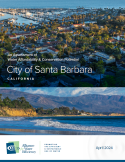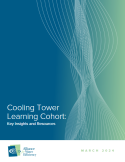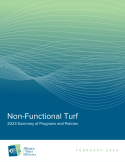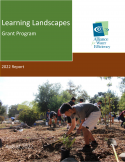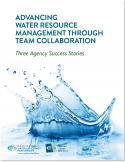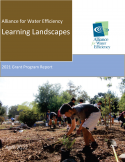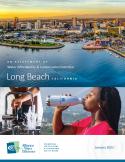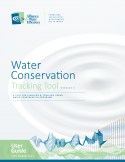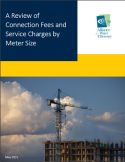More than ever, Americans need more homes that are affordable to buy initially and own in the long run. At the same time, water resources are being stretched thin, and water utility bills are increasing faster than inflation. Efficiency can help address both affordability and water resource challenges. The federal government already provides tax credits for ENERGY STAR Homes under the tax code (26 USC § 45L) to transform the new home market to greater energy efficiency levels and ensure affordable energy bills for future homeowners.
Our Work
The Alliance for Water Efficiency (AWE) partners with our members and other organizations to produce the research, tools, resources, and information they need to advance water efficiency in their communities. Our work has helped water professionals seize new opportunities, uncover challenges, and break down barriers to achieve sustainable water use. To get involved and help define the work we do, join the AWE network today.
2024
Alliance for Water Efficiency believes the federal government has a unique opportunity to help make water affordable for more low-income households. This new policy white paper outlines AWE’s proposal that Congress create and generously fund a new federal program covering plumbing repairs and water efficiency improvements for low-income households in states, tribes, and territories.
Report Demonstrates that Efficiency Saves Water and Money for Cal Water and Its Customers
This report focuses on two questions on how water efficiency and conservation have affected Cal Water and its customers:
(1) What would the impact on bills have been if no water efficiency or conservation had occurred?
(2) Are bill-paying customers better or worse off?
Affordability is a growing concern as water and wastewater rates rise to account for the increasing costs due to aging infrastructure, extreme weather events, climate change, regulations, and inflation, to name a few. Investing in water conservation and efficiency is one strategy to keep water and wastewater bills affordable. As part of AWE’s mission to promote the efficient and sustainable use of water, AWE is conducting research to better understand how water conservation and efficiency can help lower water bills for low-income customers.
AWE recently wrapped up a learning cohort focused on Cooling Tower Efficiency alongside 15 of our members. The learning cohort consisted of utilities that met seven times from January 2023 through January 2024 to work through the cooling technology research and resources, share experiences and information, and learn from each other and from invited guests with relevant subject matter expertise.
AWE’s latest report, Non-Functional Turf: 2023 Summary of Programs and Policies, is a culmination of our work with water agencies from across the Colorado River Basin, who signed a joint memorandum of understanding in late 2022, committing to take additional actions to increase water efficiency to help protect and conserve water in the CRB region.
2023
What resulted was the First Annual Water Efficiency and Conservation Symposium in August 2023. It was an incredible three days of professional development, relationship building, and hands-on learning opportunities for the 150+ attendees from across North America, representing water and wastewater utilities, government agencies, and business and industry partners.
In 2022 AWE collaborated with Regional Water Authority (RWA) to prepare a report titled "Water and Energy Savings Estimates for CII Landscapes Upgrade Projects". RWA is a joint powers authority representing water providers and affiliates in the Sacramento region of California.
AWE’s report, An Assessment of Water Affordability and Conservation Potential in Houston, Texas, evaluates water affordability in Houston and the extent to which water efficiency and conservation can help families, particularly disadvantaged families, lower their water and sewer bills. This follows on AWE’s recent water affordability assessments, including the 2022 analysis of affordability in Long Beach, Ca
AWE’s report, Smart Practices to Save Water: An Evaluation of AMI-enabled Proactive Leak Notification Programs, presents an analysis from four participating utilities with AMI-enabled leak notification programs - Forth Worth, TX, Sacramento, CA, Sacramento Suburban Water District, and San Francisco Public Utilities Commission.
The Alliance for Water Efficiency’s 2022 U.S. State Policy Scorecard for Water Efficiency and Sustainability (Scorecard) evaluated and ranked each U.S. state based on its adoption of laws and policies that advance water efficiency, conservation, sustainability, and affordability. California was the top ranked state followed by Texas, Arizona, Washington, Georgia, New York, Nevada, New Hampshire, Colorado, and Minnesota to round out the top ten.
2022
Among AWE’s many accomplishments in 2022, which include taking an active leadership role in responding to the historic Western drought, the compilation of the third edition of the State Policy Scorecard for Water Efficiency and Conservation and the completion of a multi-year cooling tower research project, one that stands out is actually about 2023 and beyond: a new, three-year Strategic Plan (2023 – 2025). The plan was ready for a refresh, with the last update occurring in 2018.
AWE and The Scotts Miracle-Gro Foundation are excited to share a report detailing projects funded by the 2021 Learning Landscape Grants, as well as two projects from the 2020 program that were recently completed. The AWE Learning Landscape Grant Program, funded by the Scotts Miracle-Gro Foundation, helps support building or improving educational outdoor spaces at schools, botanical gardens, and community locations that allow school-age children to experience hands-on learning about water efficiency in outdoor landscapes.
Collaboration between the conservation and operation departments in water utilities is key to improving water conservation, mitigating water loss, and developing programs that will benefit the whole service area of a water utility. A strong relationship between the two departments can greatly bolster the success and lead to better management of the utility’s water and energy resources.
AWE and The Scotts Miracle-Gro Foundation are excited to share a report detailing projects funded by the 2020 Learning Landscape Grants. The AWE Learning Landscape Grant Program, funded by the Scotts Miracle-Gro Foundation, helps support building or improving educational outdoor spaces at schools, botanical gardens, and community locations that allow school-age children to experience hands-on learning about water efficiency in outdoor landscapes.
AWE’s report, An Assessment of Water Affordability and Conservation Potential in Long Beach, California, evaluates water affordability in Long Beach and the extent to which water efficiency and conservation can help families, particularly disadvantaged families, lower their water and sewer bills. This is the second installment of AWE’s water affordability assessments, following 2020’s analysis of affordabili
2021
2021 was another challenging year for the Alliance for Water Efficiency (AWE) and our partners as drought – both prolonged and seasonal - continued across much of North America, with the prospect of increasing water supply instability because of climate change. At the same time, political divisions strained the ties that bind our nation together and threatened to prevent action on a host of pressing challenges, including the growing water crisis.
Learn more about AWE's eventful 2021 in the full report.
Need help in planning your water conservation programs? The Alliance for Water Efficiency (AWE) has a solution for you. First released in 2009 after a successful beta testing period with a number of water utilities, the Tracking Tool is now in Version 4.0 (2021) and has over 400 users. The Tracking Tool is an Excel-based model that can evaluate the water savings, costs, and benefits of conservation programs for a specific water utility, using either English or Metric units.
The Alliance for Water Efficiency (AWE) partnered with the Environmental Law Institute (ELI) to examine and evaluate the legal requirements for water utility plans in each of the 50 states. AWE and ELI surveyed the statutes and regulations of each state, with a specific emphasis on how water utility plans intersect with land use policy and planning. This report reviewed relevant laws and conducted case study interviews to answer a series of questions on how community land use factors are considered in the requirements of water utility plans.
The Alliance for Water Efficiency conducted research to better understand water connection fee and recurring service charge variability by meter size across major metropolitan areas in the United States. The emergence of new pipe-sizing methodologies may lead to a trend in downsizing meters of new connections. As such, this report also explores the potential financial implications for water utilities that would be associated with a possible trend in downsizing the meter sizes of new connections.







